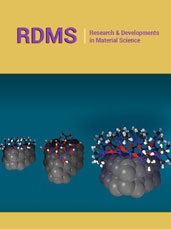- Submissions

Full Text
COJ Technical & Scientific Research
Preparing for the Next Health Crisis: Lessons from COVID-19 on Equity, Preparedness, and Socio-Economic Resilience
Murad Ali Khan*
Department of Computer Engineering, Jeju National University, Republic of Korea
*Corresponding author:Murad Ali Khan, Department of Computer Engineering, Jeju National University, Jeju 63243, Republic of Korea
Submission: January 15, 2025:Published: January 28, 2025

Volume5 Issue3January 28, 2025
Abstract
The COVID-19 pandemic has significantly affected global health systems, exposing and deepening inequalities among vulnerable populations. This paper reviews existing research to explore the pandemic’s disproportionate impact on groups such as older adults, people with underlying health conditions, racial and ethnic minorities, economically disadvantaged communities, and those living in long-term care facilities. By analyzing various studies and reports, the paper identifies systemic barriers to healthcare access, socio-economic disparities, and the elevated risks these populations face. Key takeaways underline the critical need for equitable public health measures, improved healthcare systems, and focused interventions to address these disparities in future health crises. Tackling these issues can help build societal resilience and promote more inclusive health outcomes for everyone.
Introduction
The COVID-19 pandemic has exposed substantial disparities in health outcomes across various population groups, with vulnerable individuals experiencing the greatest challenges. These vulnerable populations include older adults, those with pre-existing medical conditions, racial and ethnic minorities, socioeconomically disadvantaged groups, and residents of long-term care facilities. The pronounced impact on these groups highlights the importance of examining the factors contributing to their heightened risks and developing targeted approaches to address these disparities in future public health crises. Older adults have been among the hardest-hit populations, with significantly higher rates of mortality and severe illness. Research conducted by Verity [1] and Zhou [2] reveals that individuals aged 65 and older face an elevated risk of severe outcomes, such as hospitalization and death, due to weakened immune systems and the prevalence of chronic conditions in this age group. Similarly, individuals with pre-existing health conditions, including cardiovascular diseases, diabetes, respiratory disorders, and obesity, are more likely to experience severe complications from COVID-19. Findings by Guan [3] indicate that these comorbidities are common among patients with severe cases, leading to worse outcomes and higher death rates. Additional research by Richardson [4] reinforces these conclusions, highlighting the critical need for improved clinical care and protective measures for at-risk individuals. The pandemic has worsened existing health disparities among racial and ethnic minority groups. Studies by Millett [5] and Yancy [6] demonstrate that African American, Latino, and Native American populations have faced higher infection rates and poorer health outcomes compared to white populations. These disparities stem from factors such as socio-economic inequalities, limited healthcare access, and pre-existing health conditions. Socioeconomic status has played a significant role in determining vulnerability to COVID-19. Patel [7] found that individuals with lower incomes are more likely to work in essential roles, live in overcrowded conditions, and face barriers to healthcare, increasing both their exposure risk and their challenges in adhering to public health guidelines. Similarly, Bambra [8] emphasized how socioeconomic deprivation has amplified the pandemic’s effects, advocating for systemic policy reforms to address these inequities. Long-term care facility residents have borne a disproportionate burden during the pandemic. Mc Michael [9] reported that the close living arrangements and vulnerability of residents made these facilities hotspots for outbreaks, resulting in significant mortality rates. Gaur [10] highlighted the pressing need for enhanced infection prevention measures and stricter regulatory oversight in such settings. Healthcare and essential workers have also faced increased risks due to their direct exposure to the virus. Research by Lai [11] and Nguyen [12] underscores the physical and psychological toll experienced by these workers, highlighting the urgent need for effective protective measures and comprehensive mental health support. Homeless populations and incarcerated individuals have also been identified as highly vulnerable. Baggett [13] showed that individuals experiencing homelessness face a greater risk of transmission due to overcrowded shelters and limited access to sanitation facilities. Similarly, Elengoe [14] identified significant challenges in controlling COVID-19 outbreaks in correctional facilities, where implementing social distancing and quarantine protocols is inherently difficult. To better safeguard vulnerable populations in future pandemics, comprehensive public health strategies are essential. These should include improving healthcare access, addressing socio-economic health determinants, strengthening infection control in high-risk environments, and ensuring equitable distribution of resources such as vaccines and treatments. Bibbins-Domingo [15] advocates for a multidisciplinary approach, involving policymakers, healthcare professionals, and community organizations, to build resilient healthcare systems capable of protecting at-risk groups.
Mini Review
The COVID-19 pandemic has disproportionately impacted vulnerable groups, revealing and intensifying pre-existing inequalities in healthcare systems worldwide. Particularly affected populations include older adults, individuals with chronic health conditions, racial and ethnic minorities, socioeconomically disadvantaged communities, residents of long-term care facilities, healthcare and essential workers, and those experiencing homelessness or incarceration. Gaining insight into the complex effects on these groups is essential for devising targeted interventions to mitigate such disparities in future public health crises. Older adults have been among the hardest hit during the pandemic, with research by Heid [16] and Dhama [17] indicating significantly higher rates of severe illness and mortality. This vulnerability is largely attributed to age-related immune decline and the high prevalence of conditions such as cardiovascular disease, diabetes, and respiratory illnesses in this demographic. Similarly, studies by TS [18] and Murphy [19] highlight that individuals with pre-existing medical conditions face an elevated risk of severe outcomes, emphasizing the importance of prioritizing healthcare and protection for these groups. Racial and ethnic minority populations have also experienced disproportionate impacts, as Kirby [20] and Alcendor [21] document higher infection rates and poorer outcomes among African American, Latino, and Native American communities. These disparities are linked to systemic socio-economic inequalities, reduced healthcare access, and underlying health conditions. Furthermore, socioeconomically disadvantaged groups, as noted by Khalatbari-Soltani [22] and Shammi [23], are particularly at risk due to factors such as overcrowded housing, essential employment roles, and limited access to healthcare services.
Long-term care facilities have been epicenters for COVID-19 outbreaks, with Konetzka [24] and Hashan [25] reporting high rates of infection and mortality among residents. The close living arrangements and the concentration of high-risk individuals in these settings highlight the urgent need for enhanced infection control measures and regulatory oversight. Frontline workers, including healthcare professionals and essential employees, have faced increased exposure to the virus and significant psychological burdens, as detailed by Froessl [26] and Luan [27]. Additionally, homeless individuals and those incarcerated have been particularly vulnerable during the pandemic. Mukherjee [28] and Howell [29] emphasize that crowded shelters and detention facilities, coupled with inadequate access to hygiene resources, have heightened the risk of transmission within these populations. Below Table 1, summarizing ten key papers that discuss the impact of COVID-19 on vulnerable populations, their objectives, methodologies, and proposed solutions [30-39].
Table 1:Impact of COVID-19 on vulnerable populations.

Lessons learned from the COVID-19 pandemic
The COVID-19 pandemic has offered numerous critical insights that can shape future public health responses and policy development. These lessons encompass key areas such as strengthening healthcare infrastructure, addressing socioeconomic inequalities, refining public health strategies, and enhancing international collaboration. Learning from these experiences is essential for establishing more robust systems to effectively manage future health emergencies.
Healthcare infrastructure and preparedness: One key takeaway from the COVID-19 pandemic is the critical need for strong healthcare infrastructure and preparedness. The pandemic revealed significant weaknesses in healthcare systems globally, including limited hospital capacity, shortages of essential medical supplies, and underfunded public health programs. Research by Ranney and Livingston underscores the importance of investing in healthcare systems to improve hospital surge capacity, secure reliable supply chains for vital medical equipment, and ensure sufficient staffing to handle increased patient demand during crises.
Importance of early detection and response: The critical role of early detection and rapid response to emerging infectious diseases has been underscored by the COVID-19 pandemic. Delays in addressing the initial outbreak facilitated the virus’s global spread, highlighting the necessity for prompt public health actions. Studies by Holshue and Wang emphasize the effectiveness of early containment strategies, including extensive testing, contact tracing, and isolating infected individuals. Establishing and sustaining robust disease surveillance systems is essential to ensure the timely identification and management of infectious disease threats, helping to avert large-scale outbreaks.
Addressing health disparities: The COVID-19 pandemic has vividly exposed the health disparities that persist both within and across nations. Vulnerable groups, such as racial and ethnic minorities, economically disadvantaged populations, and individuals with pre-existing health conditions, have borne a disproportionate burden of the pandemic. Research by van Dorn highlights the necessity of addressing these disparities through focused public health strategies and socio-economic reforms. Key measures include ensuring equitable healthcare access, improving the social determinants of health, and implementing communitydriven interventions to reduce health inequities.
Socio-economic support and policy: The pandemic has underscored the critical need for comprehensive socio-economic support mechanisms to safeguard individuals and communities during health crises. Socioeconomic factors, such as job stability, access to healthcare, and secure housing, play a key role in shaping health outcomes. According to research by Nicola and Blundell, policies focused on providing financial assistance, protecting employment, and addressing housing stability are essential for mitigating the socio-economic impacts of pandemics. Strengthening social safety nets and implementing measures that reduce economic inequality can foster more resilient and equitable communities.
Global cooperation and information sharing: The COVID-19 pandemic has clearly demonstrated the importance of global cooperation and information sharing. The rapid transmission of the virus across countries highlights the interconnectedness of the world and the urgent need for coordinated international responses. Research conducted by Ghinai and Hale underscore the importance of transparent communication, sharing of data, and collaboration between nations to effectively tackle global health threats. Strengthening international health bodies and fostering partnerships on a global scale are crucial steps toward preparing for and managing future pandemics.
Discussion
The COVID-19 pandemic has had a profound impact on vulnerable populations, highlighting significant disparities and prompting the need to reassess public health strategies. This discussion will integrate findings from recent reports and utilize line graphs to visually represent key data trends, shedding light on the pandemic’s effects across different demographics and regions.
Disparities in COVID-19 impact
Recent reports from organizations like the Centers for Disease Control and Prevention (CDC) and the World Health Organization (WHO) have emphasized the unequal impact of COVID-19 on vulnerable populations [40,41]. For example, a CDC report from 2021 revealed that African American, Latino, and Native American communities faced higher infection rates and mortality compared to white populations. These disparities are driven by factors such as socio-economic inequalities, limited access to healthcare, and higher rates of comorbidities.
COVID-19 infection rates by ethnicity: The following (Figure 1) visualizes COVID-19 infection rates across different ethnic groups in the United States throughout the course of the pandemic. This graph highlights the clear disparities in infection rates, showing that African American and Latino communities experienced notably higher infection rates compared to white populations, especially in the later months of 2020.
Figure 1:COVID-19 infection rates by ethnicity in 2020.

Impact on long-term care facilities
Long-term care facilities have been severely impacted by COVID-19, as highlighted in various reports. A 2021 report from the Kaiser Family Foundation (KFF) revealed that residents of these facilities represented a significant share of COVID-19-related deaths [42,43]. The heightened vulnerability of these populations, combined with the difficulties in implementing effective infection control measures in these settings, has remained a critical concern.
COVID-19 mortality rates in long-term care facilities: Figure 2 illustrates the monthly mortality rates in long-term care facilities in the United States throughout 2020, using data from the Kaiser Family Foundation (KFF). The graph reveals a sharp rise in mortality rates within these facilities, especially during the early and mid-phases of the pandemic, highlighting the urgent need for targeted protective measures in these vulnerable environments.
Figure 2:COVID-19 mortality rates in long-term care facilities in 2020.

Socio-economic impacts
The socio-economic consequences of COVID-19 have been farreaching, impacting employment, housing, and access to healthcare. A 2021 report from the International Labor Organization (ILO) highlighted significant job losses, especially among low-wage and essential workers [4]. These economic disruptions have deepened health disparities and limited access to essential services, exacerbating existing inequalities.
Unemployment rates during the covid-19 pandemic: Figure 3 illustrates the unemployment rates in the United States throughout 2020, using data from the Bureau of Labor Statistics (BLS) [44]. The graph reveals a sharp increase in unemployment rates in April 2020, highlighting the immediate economic impact of the pandemic and the gradual recovery that followed.
Figure 3:Unemployment rates in the US during COVID-19 in 2020.

Conclusion
The COVID-19 pandemic has exposed significant disparities within global healthcare systems, disproportionately impacting vulnerable populations, including the elderly, individuals with pre-existing health conditions, racial and ethnic minorities, and socioeconomically disadvantaged groups. These disparities highlight systemic weaknesses in healthcare access, socioeconomic inequality, and public health preparedness. Moving forward, addressing these challenges requires holistic strategies that focus on ensuring equitable healthcare access, strengthening public health infrastructure, and addressing socio-economic disparities. By learning from the experiences of this pandemic and implementing inclusive policies, societies can better prepare for future health crises and ensure that all individuals, regardless of their background, receive the support and protection needed to lead healthier, more resilient lives.
References
- Verity R, Lucy CO, Ilaria D, Peter W, Charles W, et al. (2020) Estimates of the severity of COVID-19 disease. The Lancet Infectious Diseases 20(6): 669-677.
- Zhou F, Ting Yu, Ronghui Du, Guohui Fan, Ying Liu, et al. (2020) Clinical course and risk factors for mortality of adult inpatients with COVID-19 in Wuhan, China: A retrospective cohort study. The Lancet 395(10229): 1054-1062.
- Wei JG, Zheng YN, Yu Hu, Wen HL, Chun QU, et al. (2020) Clinical characteristics of coronavirus disease 2019 in China. New England Journal of Medicine 382(18): 1708-1720.
- Safiya R, Jamie SH, Mangala N, James MC, Thomas M (2020) Presenting characteristics, comorbidities, and outcomes among 5700 patients hospitalized with covid-19 in the New York city area. JAMA 323(20): 2052-2059.
- Gregorio AM, Austin TJ, David B, Stefan B, Laina M, et al. (2020) Assessing differential impacts of COVID-19 on black communities. Annals of Epidemiology 47: 37-44.
- Yancy CW (2020) COVID-19 and African Americans. JAMA 323(19): 1891-1892.
- Patel JA, Nielsen FBH, Badiani AA, Assi S, Unadkat VA, et al. (2020) Poverty, inequality and COVID-19: The forgotten vulnerable. Public Health 183: 110-111.
- Clare B, Ryan R, John F, Fiona M (2020) The COVID-19 pandemic and health inequalities. Journal of Epidemiology and Community Health 74(11): 964-968.
- Temet MM, Shauna C, Sargis P, Meagan K, James L, et al. (2020) COVID-19 in a long-term care facility-king county, Washington, February 27–March 9, 2020. MMWR Morb Mortal Wkly Rep 69(12): 339-342.
- Gaur, S., et al. (2020) Infection control measures for COVID-19 in long-term care facilities: A rapid review.
- Jianbo L, Simeng M, Ying W, Zhongxiang C, Jianbo H, et al. (2020) Factors associated with mental health outcomes among health care workers exposed to coronavirus disease 2019. JAMA Network Open 3(3): e203976.
- Long HN, David AD, Mark SG, Amit DJ, Chuan GG, et al. (2020) Risk of COVID-19 among front-line health-care workers and the general community: a prospective cohort study. The Lancet Public Health 5(9): e475-e483.
- Travis PB, Harrison K, Nora S, Jessie MG (2020) COVID-19 outbreak at a large homeless shelter in Boston: Implications for universal testing.
- Elengoe A (2020) COVID-19 outbreak in Malaysia. Osong public health and research perspectives 11(3): 93.
- Bibbins DK (2020) This time must be different: Disparities during the covid-19 pandemic. Annals of Internal Medicine 173(3): 233-234.
- Allison RH, Francine C, Maureen WG, Rachel P (2021) Challenges experienced by older people during the initial months of the COVID-19 pandemic. The Gerontologist 61(1): 48-58.
- Kuldeep D, Shailesh KP, Rakesh K, Jigyasa R, Mohd IY, et al. (2020) Geriatric population during the COVID-19 pandemic: Problems, considerations, exigencies, and beyond. Frontiers in public health 8: 574198.
- Marina TS, Laura H, Sarah R, Antonia P, Anna B (2021) Pre-existing health conditions and severe COVID-19 outcomes: An umbrella review approach and meta-analysis of global evidence. BMC Med 19(1): 212.
- Louise M, Kathleen M, Claire OD, Mairead M, Owen D (2021) The impact of the COVID-19 pandemic and its related restrictions on people with pre-existent mental health conditions: A scoping review. Archives of psychiatric nursing 35(4): 375-394.
- Kirby Tony (2020) Evidence mounts on the disproportionate effect of COVID-19 on ethnic minorities. The Lancet Respiratory Medicine 8(6): 547-548.
- Alcendor, Donald J (2020) Racial disparities-associated COVID-19 mortality among minority populations in the US. Journal of clinical medicine 9(8): 2442.
- Saman KS, Robert CC, Cyrille D, Michelle KI (2020) Importance of collecting data on socioeconomic determinants from the early stage of the COVID-19 outbreak onwards. J Epidemiol Community Health 74(8): 620-623.
- Mashura S, Bodrud D, Abu RTI, Mostafizur R (2020) COVID-19 pandemic, socioeconomic crisis and human stress in resource-limited settings: a case from Bangladesh. Heliyon 6(5): e04063.
- Tamara RK, Elizabeth MW, Alexander P, David CG, Vincent M (2021) A systematic review of long‐term care facility characteristics associated with COVID‐19 outcomes. Journal of the American Geriatrics Society 69(10): 2766-2777.
- Hashan MR, Nicolas S, Catherine K, Hannah OM, Jacina W, et al. (2021) Epidemiology and clinical features of COVID-19 outbreaks in aged care facilities: A systematic review and meta-analysis. EClinicalMedicine 33: 100771.
- Froessl LJ, Yazan A (2021) The silent pandemic: The psychological burden on frontline healthcare workers during COVID‐19. Psychiatry Journal 2906785.
- Luan R, Pu W, Dai L, Yang R, Wang P (2020) Comparison of psychological stress levels and associated factors among healthcare workers, frontline workers, and the general public during the novel coronavirus pandemic. Frontiers in psychiatry 11: 583971.
- Mukherjee TI, Nabila EB (2020) The perfect storm: COVID-19, mass incarceration and the opioid epidemic. Int J Drug Policy 83: 102819.
- Benjamin AH, Haiyan RB, Cyrus A, Shira S, Emily AW, et al. (2020) Protecting decarcerated populations in the era of COVID-19: Priorities for emergency discharge planning. Health Affairs Forefront.
- Adamo H, Yoshikawa T, Ouslander JG (2020) Coronavirus Disease 2019 in Geriatrics and Long-Term Care: The ABCDs of COVID-19. Journal of the American Geriatrics Society 68(5): 912-917.
- Didac S, Castro JP, Zenin AA, Shindyapina AV, Gerashchenko MV, et al. (2020) COVID-19 is an emergent disease of aging. Aging Cell 19(10): e13230.
- Jordan RE, Adab P, Cheng KK (2020) COVID-19: Risk factors for severe disease and death.
- Yang J, Zheng Y, Gou X, Pu K, Chen Z, et al. (2020) Prevalence of comorbidities and its effects in patients infected with SARS-CoV-2: a systematic review and meta-analysis. International Journal of Infectious Diseases 94: 91-95.
- Webb HM, Nápoles AM, Pérez SEJ (2020) COVID-19 and racial/ethnic disparities.
- Tai DBG, Shah A, Doubeni CA, Sia IG, Wieland ML (2020) The disproportionate impact of COVID-19 on racial and ethnic minorities in the United States. Clinical Infectious Diseases 72(4): 703-706.
- Ahu M, Madhumita D, Kartikey Y (2020) Structural Vulnerability and Epidemiology of COVID-19 in India-A Socio-epidemiological Approach for Health Promotion. Journal of Comprehensive Health 8(2): 1-6.
- Ahmed F, Ahmed N, Pissarides C, Stiglitz J (2020) Why inequality could spread COVID-19. The Lancet Public Health.
- Heimer R, Ryan M, David V (2020) A community responds to the COVID-19 pandemic: A case study in protecting the health and human rights of people who use drugs. Journal of Urban Health 97: 448-456.
- Saloner B, Parish K, Ward JA, Di Laura G, Dolovich S (2020) COVID-19 Cases and Deaths in Federal and State Prisons. JAMA 324(6): 602-603.
- Centers for Disease Control and Prevention (2021) COVID data tracker.
- World Health Organization (2021) Health equity and COVID-19: Addressing inequities and disparities.
- Kaiser Family Foundation (2021) COVID-19 and long-term care facilities: Addressing the crisis.
- International Labour Organization (2021) COVID-19 and the world of work: Impact and policy responses.
- Bureau of Labor Statistics (2021) Unemployment rate in the United States.
© 2025 Murad Ali Khan. This is an open access article distributed under the terms of the Creative Commons Attribution License , which permits unrestricted use, distribution, and build upon your work non-commercially.
 a Creative Commons Attribution 4.0 International License. Based on a work at www.crimsonpublishers.com.
Best viewed in
a Creative Commons Attribution 4.0 International License. Based on a work at www.crimsonpublishers.com.
Best viewed in 







.jpg)






























 Editorial Board Registrations
Editorial Board Registrations Submit your Article
Submit your Article Refer a Friend
Refer a Friend Advertise With Us
Advertise With Us
.jpg)






.jpg)














.bmp)
.jpg)
.png)
.jpg)










.jpg)






.png)

.png)



.png)






